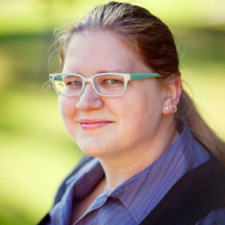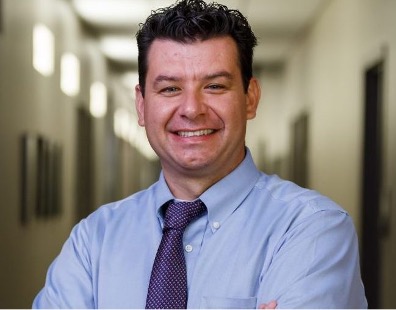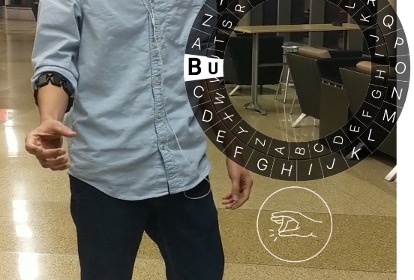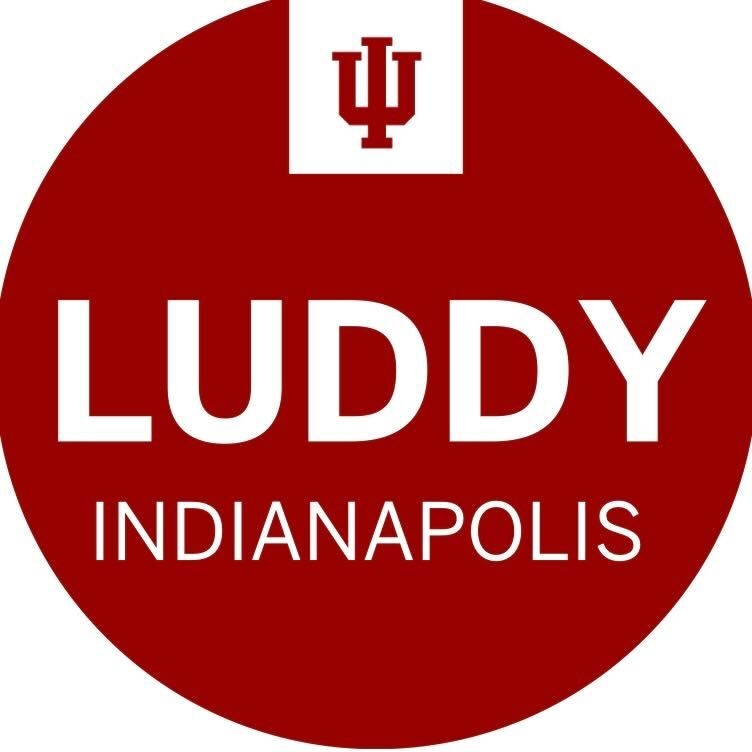School of Informatics and Computing
Pro-Social Change: Lynn Dombrowski
Lynn Dombrowski, Associate Professor in the Human-Centered Computing Department at the Luddy School of Informatics, Computing, and Engineering at IU Indianapolis, studies and designs human-centered technologies for intervening in large systemic social issues, like social and economic inequalities (e.g., hunger; food insecurity, labor issues). Her goal is to understand the limitations and strengths of information and communication technologies to foster or inhibit social change. The themes of power, empowerment, politics, ethics, values, advocacy, and social justice within the context of the design and use of socio-technical systems, are center stage. For example, innovations in collaborative work information systems can keep track of employees and contractors in domains such as ride-sharing. Drivers login to begin a work session, and computers keep track of their cars, customers, and ride locations. Such systems enable accurate payments to drivers and create work histories that are shared among managers, drivers, and clients.
In other work domains, such as home care, delivery, farm work, and child care, transparent collaborative information systems do not exist, leaving work environments open to inaccurate compensation, conflict over work requirements or behavior, or even exploitation. Prof. Dombrowski’s research, which is funded by the National Science Foundation, Intel Science & Technology Center for Social Computing, The Newkirk Center For Science and Society, and UCI’s Graduate Division Public Impact Fellowship Program, examines the needs of workers, employers, and managers for collaborative and shared reporting, and opportunities for innovative technology to create such systems. Prof. Dombrowski’s research has also explored how to design for low-wage workers, how blue-collar work is becoming data-driven and, with PhD student Nitya Verma, the challenges police face with data-driven approaches.
Current projects include:
Designing Social Computing Tools for Wage Theft
How to design computing tools to help low-wage workers deal with a problem called wage theft, which is any illegal conduct by an employer or manager that denies benefits or wages.
How are computing-aided automations changing low-wage service work?
Computerization is changing different kinds of work, and the impact on lower-waged occupations is little understood. Prof. Dombrowski is conducting interviews with low-wage service work stakeholders to identify current trends and challenges related to how new computing tools will impact their work.
Social computing systems and domestic violence
With her PhD student, Hawra Rabaan, Prof. Dombrowski’s is looking at how to design social computing tools to better support Muslim domestic violence survivors in the U.S.
Lowering Barriers for the Blind: Davide Bolchini
 SDG 4: Ensure quality education and promote lifelong learning opportunities for all
SDG 4: Ensure quality education and promote lifelong learning opportunities for all
SDG 16: Promote just, peaceful and egalitarian societies
SDG 17: Building Strong Partnerships
There are over 7 million blind people in the United States and Davide Bolchini, who chairs the IU Indianapolis Luddy School of Informatics, Computing, and Engineering Department of Human-Centered Computing, is actively exploring novel solutions that could make surfing the Web easier for them both on mobile and laptop devices. “The blind user experience with the web is still very far from enjoyable”, says Dr. Bolchini. “There is so much more that we can do to make it, not just slightly better, but considerably more natural and desirable. Together with our stellar graduate students, we will explore strategies to help blind users understand where they are on a complex website, where they can go next from a page, or what to do to know more about a topic. This can make a significant difference in daily web navigation tasks”.
Bolchini has received a major grant from the National Science Foundation’s Cyber-Human System program and a Google Faculty Research award to explore the use of wearable and sound-based technologies to increase web-accessibility for people who are blind or visually impaired. Building on over a decade of research to understand how people who are blind may aurally navigate the web, Bolchini says that we take for granted that visual displays are the only medium for experiencing information-rich, interactive applications. But he says that this paradigm is very limiting.
“Typing… is an activity that relies upon on-screen keyboards that still display characters visually. This presents a barrier for people who are blind.”

Bolchini’s research investigates how to free ourselves from screens and keypads. “A major unsolved challenge is how to manipulate text aurally and silently, in situations when voice input fails or breaks privacy boundaries,” he says. “This will allow us to unbind users from a visual display.” When people who are blind or visually impaired navigate the mobile web, for example, they have to hold a phone in their hands at all times. Such continuous, two-handed interaction on a small screen hampers the user's ability to keep hands free to control aiding devices (e.g., cane) or touch objects nearby, especially on-the-go. It also increases the chances for their device to fall or be stolen.
Community partnership is an important part of human-centered computing research. Bolchini’s research engages people who are blind and visually impaired from the Indiana School for the Blind, Bosma Enterprises, and Easterseals Crossroads as well as IU students from underrepresented groups.
Bolchini’s work build upon the research on ‘aural informatics’ by professor Steve Mannheimer and Dr. Mathew Palakal in the Human-Centered Computing Department, which already counts a prior Google Research Award and two NSF-funded projects on web accessibility, non-speech sounds, and aural navigation.
Listen to Prof. Bochini speak about his research in this 8 minute YouTube video
This research is based on work supported by the National Science Foundation under Grant IIS #1909845. Any opinions, findings and conclusions or recommendations expressed in this material are those of the authors and do not necessarily reflect those of the NSF.

